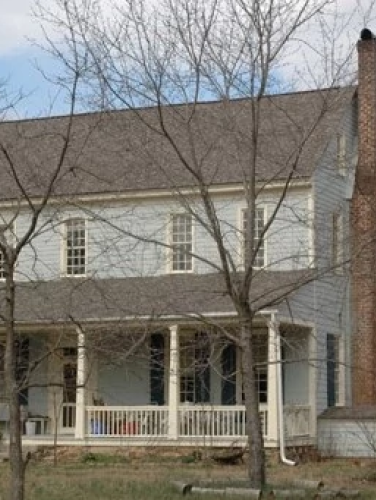
Holly Bend
(ca. 1800)
Holly Bend was the family home of Mecklenburg County’s wealthiest planter and largest plantation owner.
3701 Neck Road, Huntersville, NC 28078
Robert Davidson built Holly Bend between 1795 and 1800. The house was constructed on 420 acres given to him in 1795 by his father Major John Davidson, an early settler of Mecklenburg County who served as a North Carolina militia officer during the Revolutionary War. Located in a bend of the Catawba River, the house was reportedly named for the holly trees that grow in great abundance in that area. On January 1, 1801, after the completion of Holly Bend, Robert married Margaret Osborne. Robert is said to have been the wealthiest planter in Mecklenburg County. According to the 1850 census, he owned 2,803 acres (of which some 1,000 acres was improved land) and 109 enslaved persons, making Robert the largest plantation owner in the county. The property surrounding Holly Bend is believed to hold remnants of numerous outbuildings, including houses once inhabited by the enslaved workers. Robert and Margaret lived at Holly Bend until they died, he in 1853 and she in 1864.
Property Quick Links
The couple had no children so when Margaret passed away, their nephew Robert F. Davidson inherited the home and associated land. But Robert F. Davidson never took possession of the property because in 1863, a year before his aunt’s death, he sold James N. Osborne several tracts of land including Holly Bend in a transaction that was to take effect as of the time of his aunt’s death. Osborne acquired additional properties over time, such that in 1871, his estate sold 942 acres, including the property acquired from Robert F. Davidson, to John L. Parks. The house remained in the Parks family until 1930 when a bank foreclosure on the property forced a change of ownership. Holly Bend returned to private ownership in 1941 when Wachovia Bank and Trust Company sold the house and 221-acre associated tract of land to A. C. Newson and his wife.
The architectural significance of Holly Bend lies primarily in the treatment of its interior. Although equally elaborate interior finishes may be found in several elegant houses built in North Carolina during the Federal period, the use of such lavish interior trim in an outwardly unexceptional house, together with the exuberantly vernacular handling of forms, makes Holly Bend unique. The lively creativity of the carpenter-interpreter transformed the house’s otherwise derivative Adamesque elements into a purely local expression of Federal Neo-Classicism. Frequently called Hollywood in the twentieth century, Holly Bend was listed on the National Register of Historic Places in 1972.

